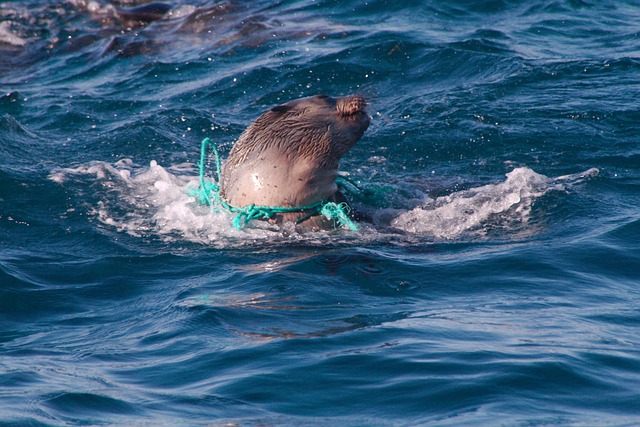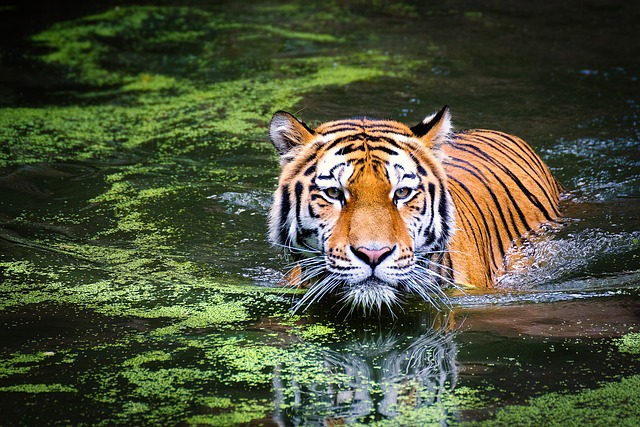What Is Meant By Environmental Hazard?
Environmental Hazards may be defined as all the various types of events or activities taking place that can potentially bring great harm to humans and the environment they are living in. This also includes the negative impacts on the many ecosystems, flora and fauna as well as other natural resources that are valuable to humans.
Also check out, Increasing Natural Disasters due to Climate Change
Related: Natural Disasters Common In Pakistan and their Impact
List Of Major Environmental Hazards In Pakistan:
Pakistan being one of the most vulnerable countries is predicted to suffer from a number of extreme weather events that have previously been unseen and unobserved in the climatic history. However, there are some other environmental hazards that Pakistan is currently being faced with, some of those are listed below:
- Extreme Weather Events: This first and foremost includes the risk of heavy monsoon season that can wreak havoc. As seen in the 2022 August floods of Pakistan driven by heavy rainfalls. This in itself was induced by climate change oncourse. However, other extreme weather events and anomalies are predicted to occur as well such as: increased heatwaves, risks of tropical cyclones hitting the Karachi Coast, flash floods, unwanted rains that can greatly hamper the agriculture sector which forms the backbone of Pakistan’s economy.
Read more: Climate Change and Its Impact on Pakistan
Also read: Expected Heatwaves in Summer Months 2023 in Pakistan - Air Pollution: Perhaps the biggest hazard in Pakistan is that of pollution. Pollution of all types, i.e. air, water and land are at immediate risk of being severely degraded. Air pollution is being contributed largely by increasing number of vehicles and transportation owned by an ever-increasing population in small areas unfit for housing. This leads to poor air quality of air and increased occurrences of SMOG twice a year during the transitional season. Smog has been dubbed as the fifth season of Pakistan and we can glean how much of a serious problem this is for people with allergies, respiratory ailments and breathing problems who have to live through a couple of months breathing in polluted air. Check out: Impacts of Transboundary Pollution on Pakistan
- Water Pollution: due to improper construction of sewage and drain systems as well as misuse of pesticides by farmers and general practice of industrial dumping of effluent in to the water ways and channels, water pollution is a major problem. It has lead to the annual occurrence of a ‘dengue season‘ in Pakistan because people living near these water ways or using it as drinking water become regularly infected. Huge numbers of people die annually and it is a recurring epidemic in Pakistan. However, this ‘epidemic’ can be solved as it is man-made due to lack of investment and water sanitation initiatives. Stagnant waters across the country is a problem mainly because of blocked sewages and drains that have not been cleaned or monitored in ages. Other water borne diseases also occur like Typhoid, cholera, dysentery, sleeping sickness/Trypanosoma etc. Animals are also suffering from water pollution due to nets, fishing rods and other waste dumped in seas and rivers. Read: Water pollution– Sources, Effects, and Control

- Land Pollution: Land or soil pollution is caused mainly by leaching of toxic waste water from landfill site dumping and excessive pesticide use on farmlands. This together severely degrades the soil quality and also has the potential to contaminate underground water reservoirs. Also read: Land/Soil pollution – Causes, Effects, and Control
- Loss of Mangroves: Habitat destruction in the form of mangroves and wetlands caused by deforestation is a massive problem in Pakistan. Deforestation alone accounts for the loss of forest cover in Pakistan that has since been decreased from 6 percent to 4 percent in a decade. Mangroves are responsible for providing food for a variety of species that in turn benefit our economies. Species like prawns, crabs, shrimps and some fish species are found mostly in mangroves which are being destroyed to make way for more land. They are also crucial for coastal protection against storm surges and cyclones. Their loss means that Pakistan is likely to suffer from major extreme events with no buffer. For more info: Mangroves of Pakistan – Types, Importance, and Environmental degradation
- Siltation: The problem of small particles or sediments of soil being deposited in water ways and channels due to flow of water is known as siltation. It is most effecting the Dam construction in Pakistan where due to the deposition, the dam’s water storage capacity is being reduced. Tarbela Dam in Pakistan has said to have lost about 40% of its capacity due to silting. This is concerning since siltation means that the top soil or soil erosion is occurring from nearby lands which in itself is an indicator of decrease in soil quality.
- Loss of Indus River Delta: Whereas dams are necessary for flood control in Pakistan however they pose another crucial problem which is the shrinking of the Indus Delta. As the Tarbela dam and another dam were created on important tributaries of the Indus river, this has lead to decreased in the delta area. The delta area that was created due to the fast flowing river waters as they emptied into the Arabian sea off the coast of Karachi, the mismanagement of water by the government as well as problems of siltation and salinity which effects its freshwater ecosystem.
Read: Effects of Climate Change on Sindh Province of Pakistan
You may also like: Pakistan’s Living Indus Initiative And Its Importance - Species Extinction: Many species in Pakistan are endangered or are at the brink of extinction. Some of these include: Tigers, Deer, blackbucks, lion and Indian horned rhinoceros have gone extinct from the region. Whereas, endangered species include: Markhor, Sindh Ibex, Vultures and Mountain cats to name a few. For a more detailed list please check out, Endangered and Critically Endangered Animals of Pakistan.
Also read: Endemic or Native Fauna and Flora of Pakistan
This loss of species is occurring mainly due to decades of illegal hunting and poaching of these animals.
- Water Scarcity: Pakistan is ranked globally as one of the most high risk country to suffer from the problem of water scarcity. The main and most apparent cause of this scarcity in Pakistan is due to climate changes that have induced droughts in some parts while floods in another. Most importantly it is due to the mismanagement of water resources by the agriculture sector and wide spread water pollution.
Also check out: The Projected Future of Water Scarcity Crisis In Pakistan and Water Scarcity Crisis in Pakistan: Causes, Effects, Solutions - GLOFs: Glacial Lake Outburst Floods that result due to the melting of the glaciers that not only cause inland flooding in mountain communities but also contribute to sea level rise that eventually may lead to floods in other parts as well. GLOFs are driven by climate change and global warming however, air pollution, deposition of particulate matter on glacier tips also lead to a myriad of problems in the form of water pollution, water contamination and diseases once they are melted.
Read: Climate Change and Himalayan Glacier Hazard and Glacial Lake Outburst Floods in Pakistan- Causes and Effects
CONCLUSION:
Serious action needs to be taken to tackle these issues before they reach a point of no return. Investing in infrastructure, promoting development, better health care facilities, general sanitation and hygiene conditions all need to be properly and thoroughly addressed in order to bring a change at the national level. Planting more trees and vegetation will greatly reduce problems of siltation, cyclones and species loss as well.
You may also like to read: Landslides and Rockfall – Causes, Effects, and Prevention
Also check out, Climate Change Threatens Health and Livelihoods of Pakistanis
I hope you all liked this post! Please comment below if you have any suggestions, comments, or feedback! We at #envpk love hearing from our readers! Thanks!




